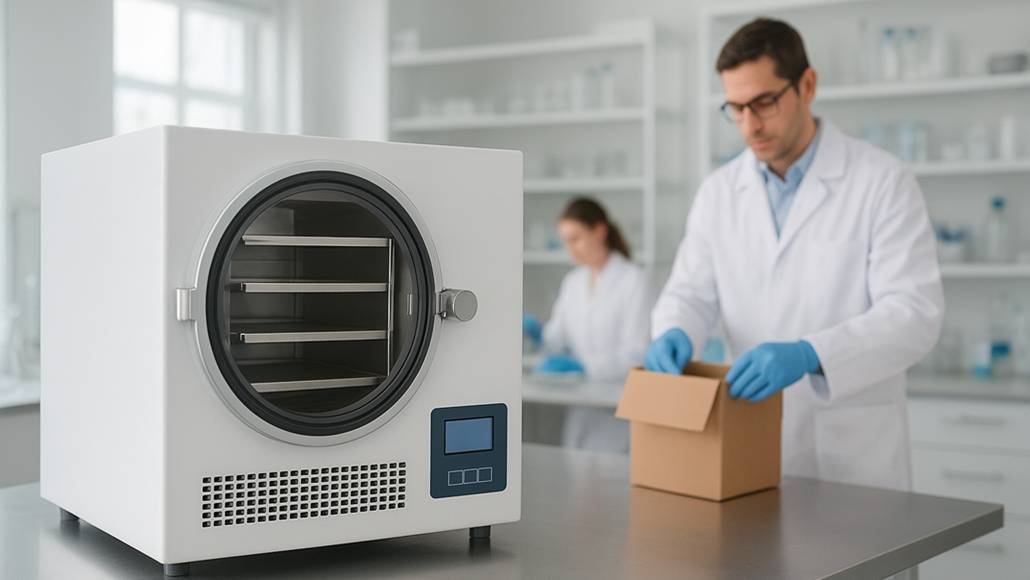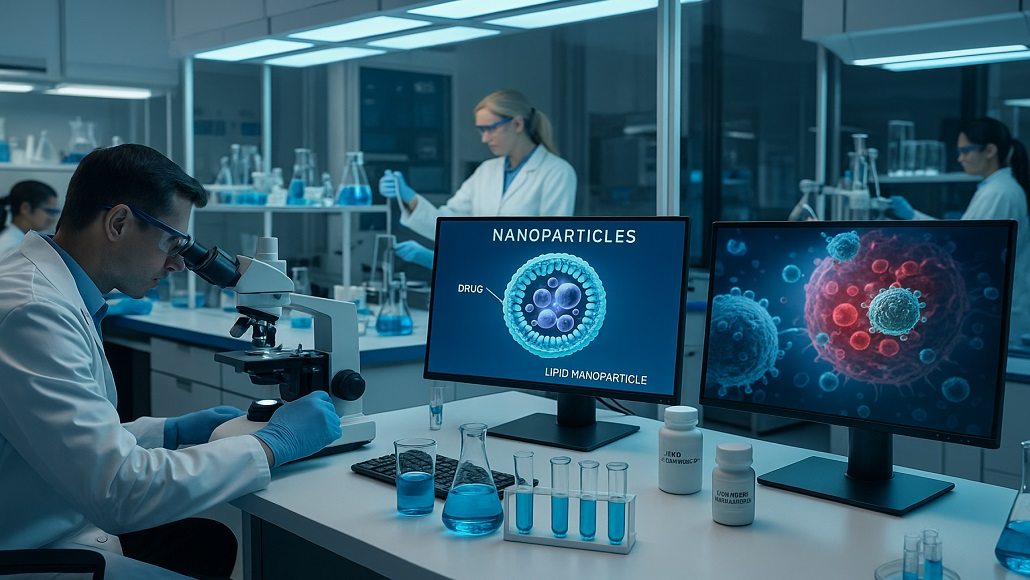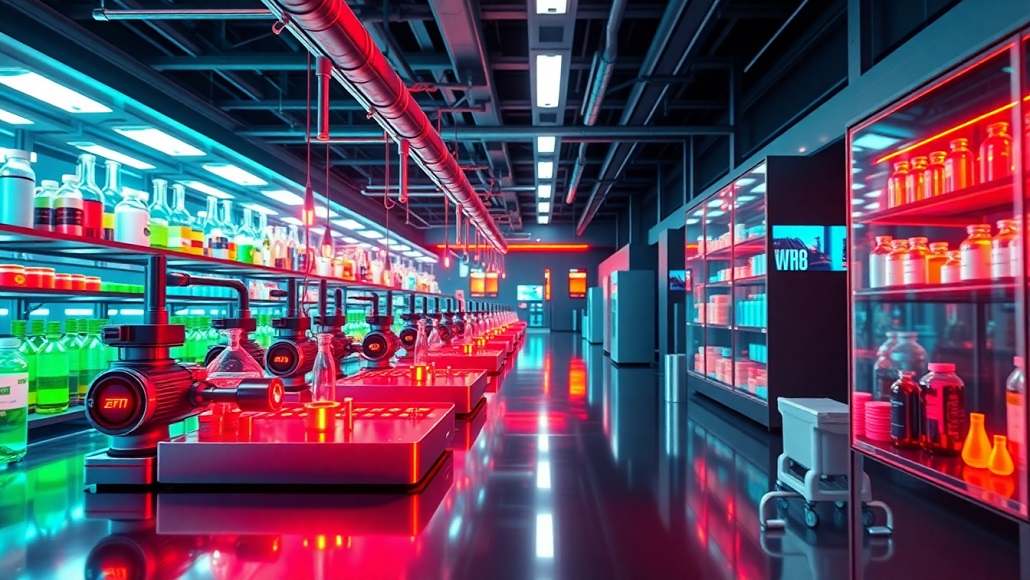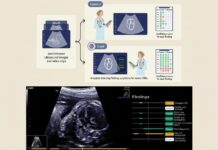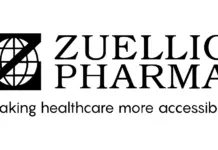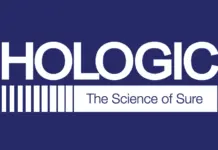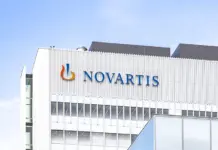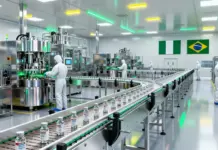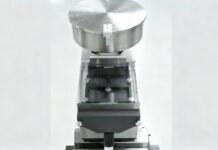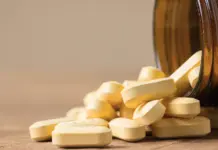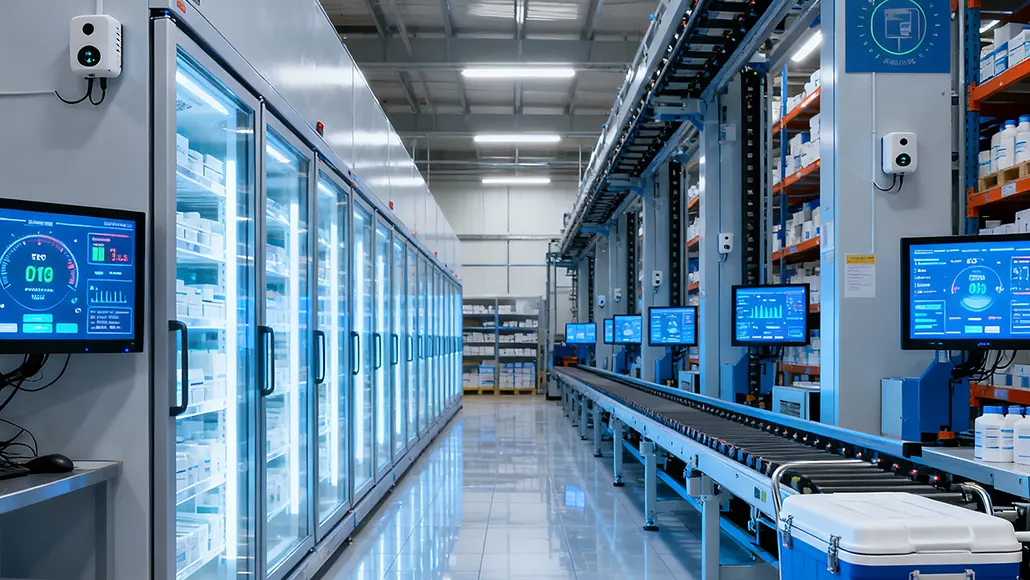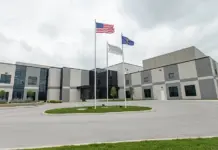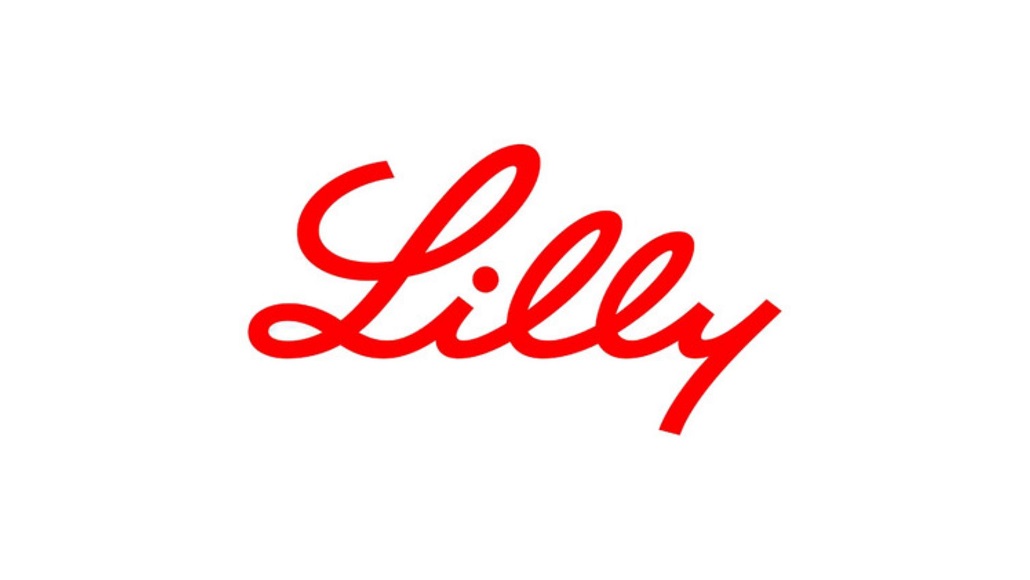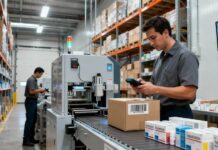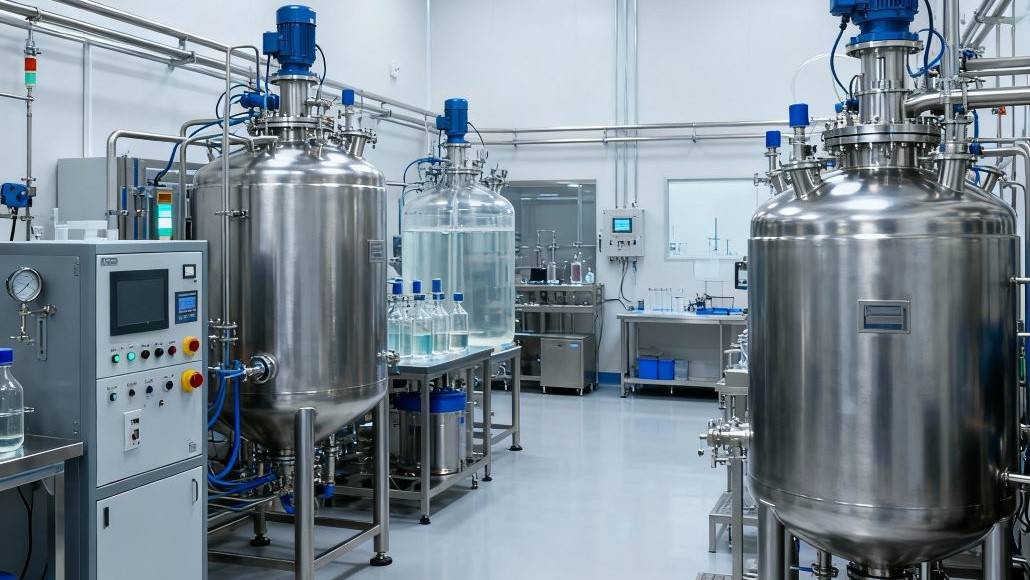Overcoming Formulation Barriers in Biosimilars Development
The biosimilar landscape represents one of the most dynamic and challenging frontiers in pharmaceutical development, where scientific complexity intersects with regulatory innovation and economic imperatives. Biosimilars formulation challenges extend far beyond simple replication, demanding sophisticated reverse engineering of complex biological molecules while navigating intricate regulatory frameworks and intense intellectual property barriers. As healthcare systems worldwide seek affordable alternatives to expensive originator biologics, understanding and overcoming these formulation obstacles becomes essential for expanding patient access to life-saving therapies.
The Fundamental Challenge of Biological Complexity
Biosimilars differ fundamentally from generic small molecule drugs in ways that profoundly impact formulation development. While chemical synthesis produces small molecule generics with identical molecular structures to originators, biosimilars can never achieve complete structural identity to reference biologics. This inherent limitation stems from the biological production processes that create these large, complex molecules through living cell systems. The term biosimilar rather than bioidentical acknowledges this reality, reflecting products that demonstrate high similarity to reference biologics but not perfect molecular replication.
Therapeutic proteins including monoclonal antibodies, fusion proteins, and enzymes consist of precisely folded amino acid chains with molecular weights often exceeding 150,000 Daltons. These massive structures dwarf typical small molecule drugs by several orders of magnitude, incorporating thousands of atoms arranged in specific three-dimensional conformations essential for biological activity. The complexity extends beyond primary amino acid sequence to encompass post-translational modifications including glycosylation, phosphorylation, oxidation, and deamidation that profoundly influence pharmacokinetics, efficacy, and immunogenicity.
Glycosylation patterns represent particularly vexing biosimilars formulation challenges, as these carbohydrate structures attached to protein backbones demonstrate exquisite sensitivity to production conditions. Cell type, culture media composition, oxygen levels, pH, temperature, and numerous other parameters influence glycan structures, creating substantial manufacturing challenges for achieving consistent glycosylation profiles matching reference products. Even minor glycosylation differences can dramatically alter protein clearance rates, tissue distribution, receptor binding, and immune recognition, potentially compromising therapeutic equivalence.
The manufacturing process defines the product in fundamental ways impossible for small molecule drugs. Unlike chemical synthesis where identical reactions reliably produce identical molecular structures, biological production introduces inherent variability. Cell line selection, expression system optimization, fermentation conditions, purification strategies, and formulation parameters all contribute molecular fingerprints that distinguish one manufacturing process from another. Biosimilar developers must reverse engineer these fingerprints without access to proprietary originator manufacturing details, essentially recreating gourmet dishes without knowing exact recipes or cooking techniques.
Analytical Comparability as the Foundation
Demonstrating biosimilarity requires comprehensive analytical characterization establishing high similarity across multiple structural and functional dimensions. This totality of evidence approach combines physicochemical analysis, biological activity assessment, and clinical studies to build confidence that observed structural similarities translate to equivalent clinical performance. The analytical comparability exercise represents the cornerstone upon which entire biosimilar development programs rest, as inadequate structural characterization undermines confidence in clinical equivalence.
Primary structure analysis confirms that biosimilar amino acid sequences match reference products exactly. Peptide mapping combined with mass spectrometry identifies any sequence variants, truncations, or modifications. While sequence identity typically proves straightforward to establish, post-translational modifications present greater challenges. Oxidation of methionine, cysteine, histidine, tryptophan, and tyrosine residues occurs through reaction with oxidizing agents during manufacturing, storage, or analysis. Deamidation converts asparagine and glutamine residues to aspartic and glutamic acid, introducing charge modifications that alter protein behavior.
Glycosylation profiling demands sophisticated analytical platforms including high-performance anion-exchange chromatography with pulsed amperometric detection, hydrophilic interaction liquid chromatography, and mass spectrometry. These orthogonal techniques map the distribution of glycan structures across protein molecules, revealing heterogeneity inherent to biological production. Biosimilars formulation challenges include achieving glycosylation profiles falling within ranges observed for reference products across multiple manufacturing lots, accounting for temporal variability as originator manufacturing evolves over product lifecycles spanning decades.
Higher-order structure assessment verifies that three-dimensional protein folding matches reference products. Circular dichroism spectroscopy examines secondary structure content including alpha helices and beta sheets, while fluorescence spectroscopy probes tertiary structure through tryptophan microenvironment sensitivity. Differential scanning calorimetry measures thermal stability, providing thermodynamic insights into conformational integrity. Hydrogen-deuterium exchange mass spectrometry represents cutting-edge technology revealing protein dynamics and solvent accessibility with residue-level resolution, enabling detection of subtle conformational differences invisible to other techniques.
Biological activity assessment ensures structural similarity translates to functional equivalence. Binding assays measure affinity for target antigens or receptors using surface plasmon resonance, enzyme-linked immunosorbent assays, or other quantitative platforms. Cell-based potency assays evaluate downstream signaling, proliferation inhibition, antibody-dependent cellular cytotoxicity, or complement-dependent cytotoxicity depending on the specific mechanism of action. These functional studies provide critical bridges between structural characterization and clinical performance expectations.
Formulation Development Navigating Comparability Requirements
Biosimilars formulation challenges involve balancing multiple competing objectives. Formulations must stabilize proteins against degradation pathways including aggregation, oxidation, deamidation, and fragmentation that occur during manufacturing, storage, and administration. Simultaneously, formulations should match or improve upon reference product characteristics including administration route, dosing frequency, injection volume, and patient tolerability. Regulatory frameworks permit formulation innovations that enhance product quality, but any deviations from reference formulations require scientific justification demonstrating that changes do not introduce clinically meaningful differences.
Buffer selection represents a foundational formulation decision profoundly influencing protein stability. Histidine buffers have gained prominence in monoclonal antibody formulations due to favorable properties including appropriate buffering capacity in the pH 5.5 to 6.5 range often optimal for antibody stability, minimal protein-protein interactions compared to phosphate buffers, and excellent compatibility with high-concentration formulations. Phosphate and citrate buffers offer alternatives with distinct advantages for specific proteins. The trend toward buffer-free formulations exploiting protein self-buffering capacity simplifies compositions while potentially improving stability and reducing injection site reactions.
Excipient selection balances stabilization needs against safety considerations and regulatory precedents. Sugars including sucrose and trehalose provide stabilization through preferential exclusion mechanisms, where thermodynamic preferences for protein hydration over sugar-protein interactions stabilize native conformations. Polyols such as sorbitol and mannitol offer alternative stabilizing agents with distinct properties. Surfactants including polysorbates prevent surface-induced aggregation at air-liquid and container-solution interfaces where protein unfolding initiates aggregation cascades. Amino acids serve diverse functions, with arginine preventing aggregation through multiple mechanisms and methionine scavenging oxidative species.
High-concentration formulations present particular biosimilars formulation challenges as therapeutic demands increasingly favor subcutaneous administration requiring protein concentrations exceeding 100 milligrams per milliliter. These concentrated solutions exhibit dramatically elevated viscosity complicating manufacturing operations and limiting injection speed while potentially causing pain during administration. Protein-protein interactions driving viscosity include electrostatic attractions and repulsions, hydrophobic effects, and specific associative interactions dependent on protein structure and solution conditions. Formulation strategies addressing viscosity include pH optimization away from isoelectric points, addition of salts or amino acids modulating electrostatic interactions, and incorporation of excipients reducing protein-protein associations.
Aggregation represents the most serious physical instability concern for biosimilars formulation challenges, as aggregates compromise product quality, reduce efficacy, and significantly increase immunogenicity risks. Multiple aggregation pathways operate depending on whether native proteins, partially unfolded intermediates, or pre-existing aggregates serve as nucleating species. Native state aggregation occurs when properly folded proteins self-associate through complementary surface patches. Denatured protein aggregation follows partial unfolding exposing buried hydrophobic residues that rapidly associate. Nucleation-dependent aggregation involves formation of critical oligomers serving as templates for rapid growth.
Regulatory Pathways and Global Harmonization
The regulatory framework governing biosimilar approval evolved significantly since the European Medicines Agency authorized the first biosimilar in 2006. Both the EMA and the United States Food and Drug Administration employ abbreviated pathways recognizing that extensive characterization demonstrating biosimilarity reduces need for duplicating originator clinical development programs. These pathways balance rigorous quality standards ensuring patient safety against practical recognition that requiring full clinical programs for highly similar molecules would negate economic benefits driving biosimilar development.
The EMA pioneered biosimilar regulation through a centralized procedure providing single applications evaluated by the Committee for Medicinal Products for Human Use with authorization granting access across the European Union. This harmonized approach contrasts with fragmented national approval processes, facilitating broader market access and reducing regulatory burdens. The EMA provides both general guidelines applicable across biosimilar classes and product-specific guidance addressing unique considerations for specific molecule types including monoclonal antibodies, erythropoietins, granulocyte colony-stimulating factors, and insulin analogs.
The FDA biosimilar pathway established through the Biologics Price Competition and Innovation Act of 2009 gained momentum following publication of comprehensive guidance documents and approval of the first biosimilar in 2015. The FDA approval rate has accelerated substantially, authorizing sixteen biosimilars during the first four years of the program compared to thirteen EMA approvals during its initial four-year period. This faster approval pace reflects lessons learned from European experience and deliberate policy initiatives including the Biosimilars Action Plan emphasizing streamlined pathways supporting biosimilar development, approval, and commercialization.
Key regulatory differences between agencies influence development strategies. The FDA uniquely offers interchangeability designation allowing pharmacy-level substitution without prescriber intervention, contingent on demonstrating that switching between biosimilar and reference product presents no increased safety risks or decreased effectiveness compared to continuous reference product use. This often requires switching studies where patients alternate between products multiple times. While scientifically controversial given analytical capabilities demonstrating molecular similarity, interchangeability designation provides market advantages potentially driving adoption despite additional development costs.
Indication extrapolation represents another area where regulatory philosophies influence biosimilars formulation challenges and development strategies. Both agencies permit extrapolating biosimilarity demonstrated in one indication to other approved indications for the reference product, provided scientific justification supports extrapolation. Factors considered include mechanism of action similarity across indications, relevant immune response patterns, and pharmacokinetic considerations. Conservative regulators may require additional data limiting extrapolation, while others embrace broader extrapolation when scientific rationale supports it.
Intellectual Property Landscape and Patent Navigation
Patent challenges represent formidable non-technical biosimilars formulation challenges profoundly impacting market entry strategies and commercial viability. Originator companies employ sophisticated intellectual property strategies creating patent thickets surrounding reference biologics through numerous patents covering active molecules, manufacturing processes, formulation compositions, administration devices, and medical uses. These overlapping patents extend effective market exclusivity beyond primary composition-of-matter patents, delaying generic competition and maintaining pricing power.
Formulation patents specifically claim excipient compositions, concentration ranges, pH specifications, stabilization strategies, and other formulation elements. Biosimilar developers must either design around these patents through alternative formulations demonstrating non-infringement, challenge patent validity through inter partes review or litigation, or negotiate licenses accepting royalty obligations. Each strategy carries distinct risks, costs, and timelines influencing development decisions and market entry timing.
The tension between scientific flexibility permitting formulation improvements and patent constraints limiting formulation options creates strategic dilemmas. While regulators encourage innovations enhancing product quality, aggressive originator patent estates may render innovative formulations commercially unviable through infringement risks. This dynamic sometimes forces biosimilar developers toward suboptimal formulations that avoid patent issues but sacrifice performance improvements that scientific understanding could enable.
Patent litigation represents an expected component of biosimilar commercialization strategies, with originator companies typically filing infringement suits shortly after biosimilar approval. These lawsuits trigger automatic thirty-month stays delaying biosimilar launch while courts adjudicate infringement and validity questions. The substantial costs of patent litigation, often tens of millions of dollars per case, create barriers favoring well-funded developers while discouraging smaller companies from pursuing biosimilar programs.
Manufacturing Process Development and Scale-Up
Biosimilars formulation challenges extend beyond laboratory development to encompass manufacturing at commercial scale while maintaining product quality and consistency. The process defines the product principle means that changes in manufacturing processes can alter product characteristics, requiring demonstration that process changes maintain biosimilarity. This creates conservative tendencies favoring process consistency over optimization, as improvements introducing process changes trigger comparability studies demonstrating maintained similarity.
Cell line development represents the starting point for manufacturing process design. Biosimilar developers must generate proprietary cell lines expressing target proteins at high yields while producing quality attributes matching reference products. Chinese hamster ovary cells represent the predominant expression system for mammalian proteins given their capacity for complex post-translational modifications, though other systems including bacteria, yeast, and human cell lines suit specific applications. Screening hundreds or thousands of cell line candidates identifies clones combining high productivity with desired quality profiles.
Upstream processing encompasses cell culture conditions determining protein expression and initial quality attributes. Bioreactor design, culture media composition, feeding strategies, oxygen and pH control, and harvest timing all influence product characteristics. Process analytical technology enables real-time monitoring of critical process parameters and quality attributes, supporting process control ensuring consistency. Single-use bioreactors have transformed manufacturing flexibility, reducing contamination risks, eliminating cleaning validation, and enabling rapid changeovers between products.
Downstream processing purifies proteins from complex cell culture harvests containing myriad impurities including host cell proteins, DNA, endotoxins, viruses, and aggregates. Chromatography steps exploit differences in charge, size, hydrophobicity, or specific binding to separate target proteins from contaminants. Viral inactivation and clearance steps including low pH treatment, detergent addition, and filtration ensure viral safety. The purification process must efficiently remove impurities while maintaining protein integrity, avoiding conditions promoting aggregation or chemical modifications.
Quality by Design and Digital Innovation
Quality by Design principles have revolutionized biopharmaceutical development by emphasizing systematic understanding of how material attributes and process parameters affect product quality. For biosimilars formulation challenges, Quality by Design facilitates identifying formulation and process design spaces within which products consistently meet quality specifications. This scientific understanding supports regulatory filings by demonstrating control strategies ensuring manufacturing consistency throughout commercial lifecycles.
Risk assessment methodologies including failure mode and effects analysis systematically evaluate potential failure modes, causes, effects, and detection methods. This structured approach prioritizes risks based on severity and likelihood, guiding mitigation strategies and control implementation. For biosimilar formulations, risks include protein aggregation, chemical degradation, container-closure interactions, and transportation stresses that could compromise quality.
Process analytical technology transforms traditional end-product testing paradigms toward real-time quality assurance through inline or at-line analytical measurements. Spectroscopic techniques including Fourier-transform infrared spectroscopy and Raman spectroscopy monitor protein concentration, conformational integrity, and aggregation during manufacturing. These rapid measurements enable process adjustments maintaining quality rather than discovering deviations after batches complete manufacturing.
Artificial intelligence and machine learning applications are emerging as powerful tools addressing biosimilars formulation challenges through predictive modeling and optimization. Molecular dynamics simulations predict protein behavior under various formulation conditions, identifying aggregation-prone regions and suggesting stabilization strategies. Machine learning algorithms trained on historical data predict stability outcomes from formulation composition, accelerating formulation screening compared to purely empirical approaches. In silico immunogenicity prediction tools identify potentially immunogenic sequences or structural features, guiding protein engineering or formulation strategies minimizing immune response risks.
Immunogenicity Considerations
Immunogenicity represents a critical safety concern for all biologic therapies including biosimilars, as unwanted immune responses can neutralize therapeutic effects or cause serious adverse events. While biosimilars demonstrating high analytical similarity to reference products would not be expected to demonstrate different immunogenicity, formulation factors and manufacturing processes can influence immunogenic potential. Understanding these relationships informs biosimilars formulation challenges and risk mitigation strategies.
Protein aggregates constitute a major immunogenicity risk factor, as aggregated proteins present repetitive epitopes recognized by immune systems as danger signals triggering antibody responses. Even trace aggregate levels can provoke immunogenicity in susceptible patients, making aggregate control a paramount quality concern. Analytical methods including size exclusion chromatography, analytical ultracentrifugation, and field flow fractionation quantify aggregates across size ranges from dimers to large particles, establishing specifications ensuring aggregate levels remain acceptably low.
Oxidation and other chemical modifications create neoantigens by altering amino acid side chains, potentially generating immunogenic epitopes absent in native proteins. Formulation strategies minimizing oxidation include antioxidant addition, oxygen exclusion through nitrogen overlay or vacuum, and avoidance of light exposure triggering photochemical oxidation. Metal chelators bind trace metal contaminants catalyzing oxidative reactions.
Container-closure systems may introduce extractables and leachables that interact with proteins promoting aggregation or chemical modifications. Tungsten particles shed from glass syringes, silicone oil used as lubricant, and rubber stopper components represent examples of container-related substances potentially impacting immunogenicity. Careful container-closure selection and compatibility testing mitigate these risks.
Future Directions and Emerging Technologies
The biosimilar field continues evolving with innovations addressing remaining biosimilars formulation challenges and expanding development capabilities. Advances in analytical technologies enable increasingly sensitive detection of structural differences, strengthening confidence in biosimilarity assessments. Hydrogen-deuterium exchange mass spectrometry, native mass spectrometry, and other cutting-edge techniques reveal protein characteristics invisible to earlier analytical methods, supporting comprehensive comparability demonstrations.
Continuous manufacturing represents a transformative approach replacing traditional batch processing with integrated systems where materials flow continuously through manufacturing operations. Advantages include improved process control, reduced facility footprints, enhanced flexibility, and potentially lower costs. For biosimilars, continuous manufacturing could accelerate development timelines and simplify scale-up by eliminating batch-to-batch variations inherent to traditional approaches.
Formulation innovations including novel excipients, alternative buffer systems, and stabilization technologies promise improved product performance. Ionic liquids, nanoparticle stabilizers, and designer polymers represent examples of next-generation formulation components potentially overcoming current limitations. As these technologies mature and regulatory acceptance expands, biosimilar developers will gain additional tools addressing formulation challenges.
Platform approaches leveraging learnings across multiple biosimilar programs accelerate development by applying proven strategies to new molecules. Companies developing multiple biosimilars accumulate institutional knowledge regarding analytical methods, formulation strategies, manufacturing processes, and regulatory interactions that streamline subsequent programs. This experience curve creates competitive advantages for established biosimilar developers while raising barriers for new entrants.
Conclusion
Biosimilars formulation challenges encompass scientific complexity spanning molecular characterization through manufacturing scale-up, regulatory navigation across multiple global agencies, intellectual property strategy balancing innovation against infringement risks, and commercial considerations ensuring economic viability. Success requires multidisciplinary expertise integrating analytical chemistry, protein biochemistry, formulation science, manufacturing engineering, regulatory affairs, and intellectual property law. As biosimilar markets mature and development capabilities advance, these complex therapies increasingly fulfill their promise of expanding patient access to life-saving biologics while reducing healthcare costs. Continued innovation addressing remaining formulation barriers will further accelerate biosimilar adoption, ultimately benefiting patients worldwide through improved therapeutic access and system sustainability.



